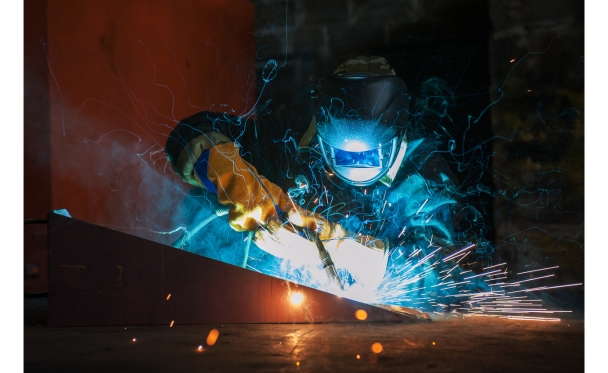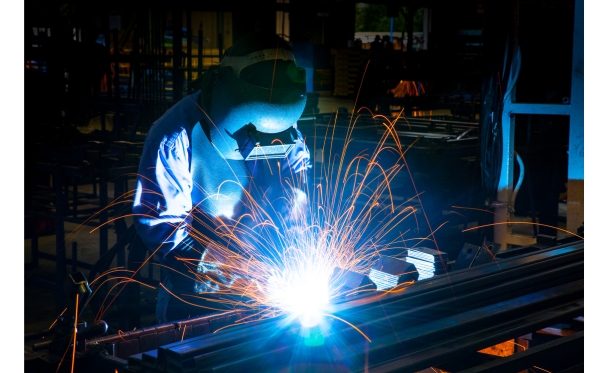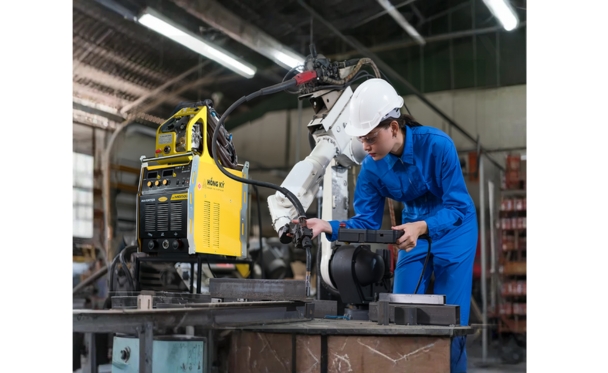You don't have any items in your cart.
- Product
 Welding machine, plasma metal cutter
Welding machine, plasma metal cutter Welding Accessories & Materials
Welding Accessories & Materials Robots & Automated Welding
Robots & Automated Welding Steel Processing line
Steel Processing line Drill – Cutting – Taro Machines
Drill – Cutting – Taro Machines Electric Motor
Electric Motor Water Pump
Water Pump Woodworking machine
Woodworking machine Abrasive Material
Abrasive Material
- About us
- Service
- Giải pháp
- Guideline or Instruction
- Contact Us
- Distributor or Agent
- News
- Recruitment
0
What is structural steel welding?
Structural steel welding is the process of joining steel components – such as structural beams, steel plates, pipes, or pre-fabricated assemblies – using heat or pressure to create strong, durable welds. This process forms the primary load-bearing framework of industrial and civil structures. It is a critical step in constructing pre-engineered buildings, factories, bridges, power plants and other key infrastructure projects.

Unlike general-purpose welding, structural welding requires joints that can withstand heavy loads and ensure long – term stability while maintaining strict accuracy in geometry, technical integrity and visual quality. It is not merely a mechanical operation but an integral part of structural design and execution.
Structural steel welding – High demands, comprehensive solutions
Structural welding is fundamentally different from conventional welding. It requires a synchronized solution involving proper techniques, specialized equipment and compatible welding materials to meet key demands:
-
High load-bearing capacity and long-term stability, especially with thick steel, structural profiles, or high-strength steel.
-
Precision in weld geometry to avoid deformation or warping that could impact assembly accuracy.
-
Aesthetic and durable welds capable of withstanding harsh environments (humidity, salt, high temperatures, vibration).
-
Fast execution timelines while still complying with stringent quality standards.

Therefore, selecting a welding solution for structural steel is not just about choosing the right method – it’s a strategic decision tied to the project’s technical capability and overall cost-efficiency.
Optimizing the welding solution – From technology to process
An effective structural steel welding solution typically includes:
-
Appropriate welding technologies: MIG/MAG for speed and automation, TIG for precision and appearance, or manual arc welding for outdoor or field assembly.
-
High – capacity equipment that ensures continuous operation and reliability in heavy-duty industrial or on – site conditions.
-
Compatible welding consumables: Specialized electrodes or filler wires for structural steel that ensure deep penetration, high strength and superior crack resistance.
-
Strict welding process control: From surface cleaning, part fitting, weld execution, to non-destructive testing (ultrasound, magnetic particle, X-ray inspection) to ensure zero technical errors.

When systematically applied, the right welding solution not only shortens construction timelines but also reduces maintenance costs, increases the structure’s service life and boosts the contractor’s competitiveness.
Multi – sector application – Performance beyond expectations
Specialized welding solutions for structural steel are successfully used in:
-
Pre-engineered buildings, logistics centers and high-rise warehouses
-
Bridge construction, substations, thermal and renewable power plants
-
Manufacturing of silos, towers, storage tanks and industrial piping systems
-
Shipbuilding, heavy industry and offshore oil & gas
Regardless of the application, one truth remains: The right welding solution leads to solid structures.
Conclusion: Welding technology – The backbone of century – defining projects
As industrialization and urban expansion accelerate, today’s infrastructure demands not only modern designs but also precise, resilient construction techniques. In this context, structural steel welding solutions play a “silent” yet pivotal role in determining a project’s success or failure.

Investing in the right welding solution means investing in the solid foundation of the future.
Learn more: High-performance MIG welding machines for industrial applications.






